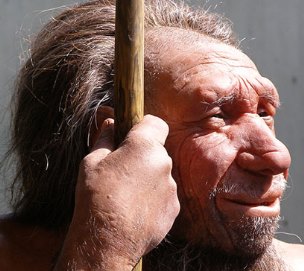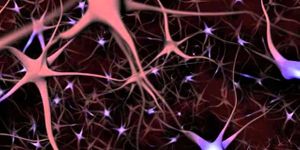Videos
How Neurons Work Made Simple
FEB 11, 2014 12:00 AM PST
Share
Neanderthal Genes Live On
 Thanks to the relatively recent development of genome mapping, scientists have been able to delve deeper than ever into our collective genetic history. Two recent genome studies focused on the relationship between the genes of modern man and Neanderthals. Insert your own joke here.
Thanks to the relatively recent development of genome mapping, scientists have been able to delve deeper than ever into our collective genetic history. Two recent genome studies focused on the relationship between the genes of modern man and Neanderthals. Insert your own joke here.All kidding aside, these studies provide interesting insight into the components of Neanderthal DNA that live on in modern humans.
One study, conducted by researchers in the Genome Sciences Department at the University of Washington, focused on a different method of analyzing data from 665 test subjects living in Europe or East Asia. Previous research implied that around 1-3% of the genome of any individual of non-African lineage was inherited from Neanderthals. By looking at the data in a different way - how much of the original Neanderthal genome was still present in the collective study group, as opposed to any one individual - the team was able to determine that more than 20% of the Neanderthal genome is still present in modern humans.
To verify their results, the team compared their conclusions on the modern sequences suspected to be Neanderthal in origin to a reference Neanderthal genome that was recently mapped from DNA taken from bone fragments. The team discovered that their assumptions were correct. Their work was published in a recent edition of Science.
What happened to the other 80% of the Neanderthal genome? (Insert second joke here.) The research team believes that those sections of the genome were less useful or had adverse effects as mankind progressed, and natural selection caused those sections to die out over time. Changes in local climates or exposure to new conditions and potential diseases, among other evolutionary conditions, weeded out all but the necessary portions of Neanderthal DNA.
Theoretically, scientists may be able to use this approach to work backward and determine properties from extinct groups without any remains to provide a DNA reference for mapping - since the group correctly predicted the Neanderthal components prior to looking at the reference genome.
The second study, recently published in Nature, focused on understanding the transition of genes between Neanderthals and modern humans. A research group at Harvard Medical School determined that, when compared to Europeans, people from East Asia had on average a higher percentage of their genome that originated with Neanderthals, and that certain genes in more than 60% of Asians or Europeans contained Neanderthal variants while others contained no Neanderthal variants at all.
It seems likely that as early humans migrated from Africa and into Neanderthal environments, they eventually genetically adapted to the Neanderthal's environment. In fact, conditions such as type 2 diabetes, smoking habits, Crohn's disease and lupus have been associated with Neanderthal DNA, as has keratin (the protein prevalent in our skin and hair).
Why does this matter? Aside from having a greater understanding of Neanderthals, if we can assess the probability of a DNA variant being of Neanderthal origin, we can better understand how that DNA affects us, and potentially what the links are to the conditions listed above. While we've had some fun with Neanderthal jokes, that part is no laughing matter.
You May Also Like
Loading Comments...








